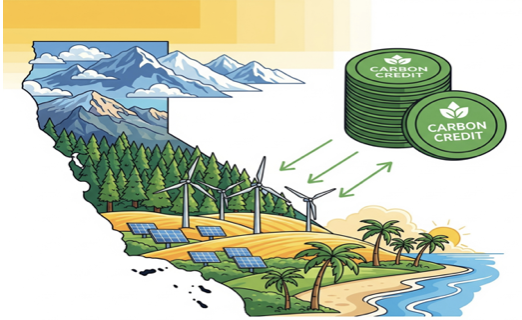In recent years, global inflation has driven up the costs of food, energy, and essential goods, placing financial strain on households and businesses alike. Yet behind this economic turmoil lies another urgent challenge—climate change. The interplay between these crises is undeniable, with extreme weather events damaging crops, disrupting supply chains, and inflating prices for commodities worldwide. At 7RCC, we see a clear opportunity to leverage carbon credits as a tool to address this dual crisis.
The Intersection of Climate Change and Inflation
Extreme weather, exacerbated by global warming, is disrupting agricultural production across the globe. From drought-induced staple shortages in Malawi to the rising costs of oranges in Brazil and coffee in Vietnam, the economic impact of climate change is deepening inequality and eroding stability. According to a study by the Potsdam Institute for Climate Impact Research, rising temperatures could increase food inflation by 3.2 percentage points annually, compounding the challenges faced by vulnerable communities.
Rather than addressing climate change solely as an environmental issue, it must become central to economic policy. Incorporating climate-related risks into inflation forecasts and fiscal strategies is essential. Tools like the African Climate Foundation’s Adaptation and Resilience Investment Platforms (ARIPs) are leading the way, helping policymakers mitigate economic damages from extreme weather events.
Carbon Credits: A Pathway to Resilience
Carbon credits represent a unique opportunity to align economic and environmental priorities. By providing financial incentives for reducing greenhouse gas (GHG) emissions, carbon credits can drive investments in sustainable practices that enhance resilience to climate impacts. Here’s how they fit into the broader solution:
- Mitigating Climate Risks: By investing in carbon credit projects such as reforestation, renewable energy, and sustainable agriculture, businesses and governments can offset emissions while reducing the likelihood of severe weather events that fuel inflation.
- Driving Economic Stability: The revenue generated from carbon credits can support communities vulnerable to climate shocks. For instance, funds can be directed to initiatives that protect crops, enhance water management, or build infrastructure resilient to extreme weather.
- Empowering Developing Economies: Developing countries often bear the brunt of climate-induced inflation. Carbon credit revenues can empower these nations to invest in low-carbon technologies and sustainable practices, creating jobs and stabilizing local economies.
The Role of Compliance Markets
Compliance carbon markets, driven by regulations like the European Union’s Emissions Trading System (ETS), are increasingly critical in mitigating climate risks. In these markets, governments cap emissions and allocate allowances that companies can trade. The price of carbon in compliance markets has surged in recent years, with the EU ETS allowance price reaching over €90 per tonne in 2024, up from around €25 per tonne in 2018.
These rising prices create a powerful economic signal, incentivizing companies to reduce emissions and invest in sustainable technologies. For instance, industries reliant on fossil fuels are being driven to adopt cleaner alternatives to avoid escalating costs. The global compliance carbon market was valued at approximately $850 billion in 2024, highlighting its growing influence on economic and climate policies.
The Positive Impact of Carbon Credits
The economic case for carbon credits has never been stronger. As businesses face increasing pressure to decarbonize, demand for high-quality carbon credits is soaring. Moreover, with regulatory frameworks like the European Union’s Carbon Border Adjustment Mechanism gaining traction, carbon credits are becoming a cornerstone of international trade.
At 7RCC, we advocate for the strategic integration of carbon credits into economic and climate policies. Here are three key areas where carbon credits can drive meaningful impact:
- Corporate Sustainability: Companies committed to achieving net-zero targets can utilize carbon credits to offset emissions and meet compliance requirements, all while contributing to global climate goals.
- Financial Innovation: Carbon credits can serve as collateral for green bonds or be integrated into investment portfolios, providing a hedge against climate risks and inflationary pressures.
- Policy Development: Governments can design carbon pricing mechanisms that incentivize businesses to adopt sustainable practices, funneling revenues into climate adaptation and resilience projects.
The Road Ahead
As inflation and climate change converge, the urgency for integrated, equitable solutions cannot be overstated. Carbon credits provide a tangible mechanism to address both crises simultaneously, enabling governments, businesses, and communities to navigate an increasingly uncertain future.
Could rising carbon credit prices in compliance markets be a key to curbing inflation? By incentivizing cleaner technologies, stabilizing energy prices, and reducing the financial burden of extreme weather events, carbon credits are proving their potential to foster resilience and economic stability.
At 7RCC, we are committed to carbon credits as an asset class to drive sustainable development and economic resilience. By investing in innovative solutions and fostering collaboration across sectors, we can turn the twin crises of inflation and climate change into an opportunity for transformative growth.





